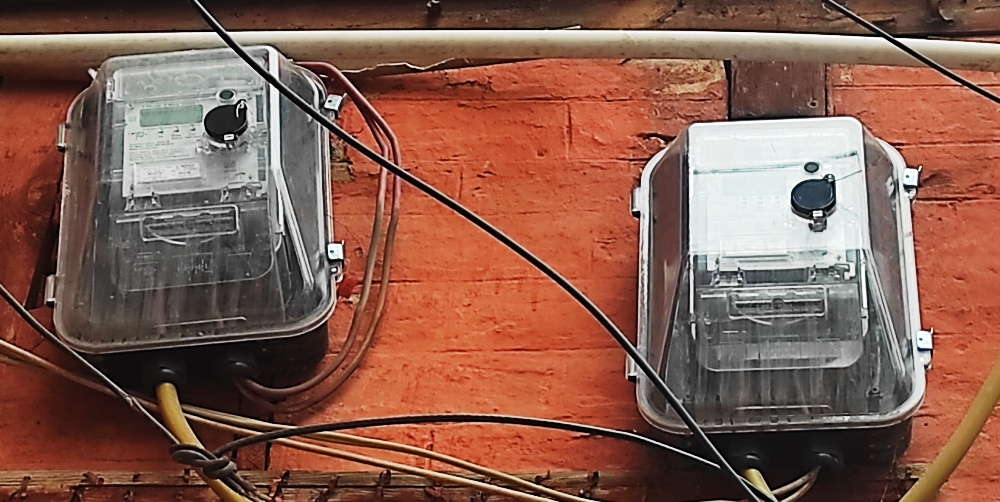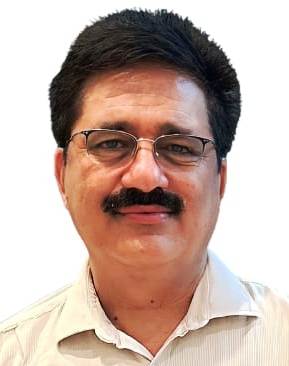by Sanjay Sharma
These meters combine real-time data acquisition with user-friendly payment mechanisms, enabling consumers to closely monitor their energy consumption and usage patterns, thereby enabling them to efficiently manage their energy budget and minimise wastage.
The history of energy metering has been one of constant evolutions, marked by technological advancements. From the early days of analogue and electro-mechanical meters, we progressed to electronic static-type digital meters, which were introduced around two decades back, improving the accuracy of energy measurements. Now, as we stand at the crossroads of yet another transformation – the era of smart pre-paid meters – the lessons of the past empower us to embrace the future with open arms and informed minds.
The power sector, inspired by the rapid evolution of technology, has embarked on a mission to turn consumers into smart users. Just as mobile phones transformed from simple communication devices into pocket-sized computers and the analogue watches transformed into versatile smart-watches, the power sector seeks to offer more than just energy supply and measurement. The recent Right of Consumer Rules 2020 issued by the Ministry of Power exemplifies this commitment by aiming to enhance consumers’ quality of life and provide exceptional services.
Digitalisation has become a cornerstone of our daily lives, fundamentally reshaping how we interact, work and even manage our essential services. Smart pre-paid meters are a prime example of how technology is redefining the consumer experience. These meters combine real-time data acquisition with user-friendly payment mechanisms, enabling consumers to closely monitor their energy consumption and usage patterns, thereby enabling them to efficiently manage their energy budget and minimise wastage. The meter readings are automatically transmitted to the data centre without any human intervention, ensuring accurate and error-free billing.

The Kashmir Story
Jammu and Kashmir has undertaken the smart meter installation in three phases under PMDP and RDSS schemes. The first phase which started in the year 2022 stands completed with installation of 1.5 lakh smart meters in Jammu and Srinagar cities.
The second phase covering 5.50 lakh smart meters is under implementation while the third phase which comprises of remaining 14 lakh smart meters is commencing soon and is targeted for completion by 2026, thereby accomplishing 100 per cent smart metering.
As we introduce this cutting-edge technology, it is important to address the commonly asked queries and concerns of the consumers with regard to smart meters.
Q: Do smart meters run faster than the traditional meters?
A: The notion that smart meters run faster than the traditional meters is indeed a myth and misconception. Smart meters are actually an upgraded version of traditional electronic static type digital meters. They are enriched with several smart features for the benefit of both utility as well as the consumers.
Comparing the speed of smart meters with traditional meters is similar to comparing speed of smart watches with the normal digital watches – both comparisons being trivial and devoid of meaningful context.
As such the term ‘smart’ in the smart meters should not be misinterpreted as smarter or fast runner, in fact, it indicates the number of smart features added on the traditional static meters. Contrary to the old electro-mechanical meters with rotating disks inside, which could sometimes become less reliable, the smart meters being advanced version of static electronic meters are entirely free from any moving components altogether.
Hence, the notion that smart meters operate faster than traditional meters is entirely a misconception.
Moreover, it is illegal for the utility companies or discoms to install fast or slow-running meters. People have the right to know details about the accuracy of the meter installed in their homes.
Q: How can I confirm that my smart meter is not running fast or slow?
A: Smart meters undergo rigorous testing and certification processes to ensure their accuracy, minimising the likelihood of any errors. As part of these comprehensive tests, a comparative meter reading assessment is also conducted between the smart meter and a reference (check) meter, just before the installation at your home, effectively eliminating the potential for inaccuracies. However, if a consumer still has doubts about the functioning of his smart meter, he has the following options to verify its accuracy:
Facility for Meter Testing: Consumers can get their meter tested through state-of-the-art meter testing laboratories located at Panama Chowk, Jammu and Bemina, Kashmir, both equipped with high accuracy class test portable test benches suitable for on-site meter testing.
Check Meter Installation: Consumers have the option to request for an additional meter, free of cost, to compare the readings of the smart meter installed at their residence, enabling them to cross-verify their readings.
For further assistance, toll-free contact numbers are conveniently accessible on the discoms’ websites and across major social media platforms.
Q: What steps should I take immediately after the installation of a smart meter at my residence to enjoy its benefits?
A: After the installation of smart meter at your residence, first and foremost, you simply need to create a user account on the web link https://smartbs.jkpdd.net. If you already have an existing account on the previous website https://billsahuliyat.jkpdd.net, the same credentials will grant you access to this link as well. You can access a range of information related to your energy consumption through this web link, which includes real-time data on your energy usage (daily, monthly, and hourly), insights into your average daily consumption, comprehensive billing information, applied tariff rates, and provided subsidies – all aimed at empowering you to make informed decisions about your energy consumption.
Additionally, the platform serves as a digital bill payment hub with various payment options for your convenience. Besides, you can effortlessly access the daily readings from your smart meter without the need for a login, by visiting the website https://www.jpdcl.co.in. Such facilities were not available with the previous metering systems.
Q: What does the red light blinking on my smart meter indicate?
A: The red light on smart meter blinks in some specific cases only, denoting leakage currents within your house wiring system, often due to old wiring and insufficient earthing/grounding. The list of such consumers is displayed on daily basis on the website https://www.jpdcl.co.in. It is advisable for consumers to immediately inspect their electrical wiring and grounding systems, which not only helps maintain accurate meter readings but also ensures the safety of your appliances. It is important to note that while the meters installed in the second phase do not incorporate a blinking light, they do present an earth leakage indication directly on the display.
Q: Why am I receiving bills on a daily basis?
A: It is a characteristic feature of smart prepaid meters to provide up-to-the-minute data on your energy usage. As a result, your consumption is being calculated and billed on a daily basis to ensure accuracy and transparency. By receiving bills daily, you have more control over your energy budget, thereby eliminating sudden spikes in your expenses at the end of the month.
Q: Why are physical bills not being delivered to my home after installation of smart meters?
A: Smart prepaid meters provide the convenience of digital billing, eliminating the need for paper bills. Your energy consumption data is available online on the web link https://smartbs.jkpdd.net, which allows you to access your billing information anytime, anywhere. If you are accustomed to receiving physical bills and have concerns about the shift to digital billing, you can always ask for a physical copy by visiting the concerned sub-division office.
It is worth mentioning that the initial delay in delivering the bills when the smart meters were installed in the first instance was due to communication issue of smart meters, which work on RF technology, with the Meter Data Management system at data center. Such kind of initial hitches are common when any new technology is rolled out. The issue has however been completely resolved.
Q: How can I know whether I am a prepaid consumer or a post-paid consumer?
A: You will get intimation through SMS on your registered mobile number and email immediately as you get converted to pre-paid mode. Besides, your pre-paid or post-paid meter status can also be viewed on the website https://www.jpdcl.co.in/smartmeter/ by simply entering your consumer ID, without requiring to login.
Q: Are there any added benefits to a pre-paid consumer?
A: Yes, if you are a pre-paid consumer, you will get an additional 2 per cent rebate on your electricity bill which is not available for post-paid consumers. Additionally, you gain access to a range of smart features through the web link https://smartbs.jkpdd.net. By accessing real-time data on your energy usage through the weblink, you gain a powerful tool for managing your energy consumption effectively.
For instance, if you aim to limit your monthly bill to Rs 900, you have to bring down your average daily consumption to Rs 30. With access to real-time data, you can actively track and monitor your real-time energy consumption and tailor your usage by switching off any unnecessary appliances that might be contributing to an increase during a particular slot/period of the day. Also, just like a pre-paid mobile phone, you can simply top-up your energy meter with part/ smaller, manageable amounts on daily or weekly basis rather than paying full amount at the end of the month.
Q: Do I have a choice between pre-paid and post-paid mode?
A: All the consumers are gradually being ported to pre-paid functionality in a phased manner as per Government of India guidelines. The shift to prepaid mode is being done to empower you to have better control over your energy budget and encourage energy-conscious behaviour. While the initial adjustment period might present several challenges, it also opens avenues for long-term savings and a more sustainable energy lifestyle. Allow yourself to adjust to the new billing method gradually. As you adapt to this new billing method, you will discover its benefits in managing your energy consumption and optimizing your budget.
Q: Do I have the option to not to switch to a smart meter?
A: In accordance with the guidelines set by the Government of India, the transition to smart meters is mandatory and non-smart options are not permissible. These guidelines are in place to ensure a more efficient and technologically advanced energy management system. Smart meters offer multiple advantages, including accurate billing, effective energy management, and seamless integration with modern utility infrastructure. Embracing smart meters will ultimately contribute to a more streamlined and effective energy consumption experience.
Q: What should I do if my pre-paid balance gets exhausted during odd-hours and my power supply is disconnected?
A: You will receive timely alerts via SMS and email notifying you of your low pre-paid balance. In the event that you overlook recharging your account, leading to a disconnection of power supply, rest assured that your power will be reinstated automatically as soon as you make the payment.
Q: Which payment methods are available for me?
A: Smart prepaid meters offer a range of convenient payment methods including BHIM/ UPI, credit debit cards, payment wallets, internet banking, tailored to your preferences. As already mentioned, you simply need to create a user account on https://smartbs.jkpdd.net and click on pay bill or recharge, which directs you to a gateway with all payment options available.
Q: If I have a rooftop solar system installed at my home, how would I know my import/ export energy information?
A: Your daily energy import and export information is available on daily basis on the website https://www.jpdcl.co.in/smartmeter/.
Q: Why in some cases a high bill has been received after the installation of smart meter?
A: In most of the cases, high bills are being received due to unpaid legacy dues of consumers and not due to any alteration in billing after smart meter installation. To facilitate easier bill payment, the department has come up with the Amnesty Scheme, where consumers are provided with the choice to separate legacy dues from their monthly bill. The Amnesty scheme, available until November 2023, further offers a waiver of interest accrued due to late payment surcharges.
Another common reason for high billing is presumably due to mid-month Installation of smart meters, where the additional days of previous month are included in the subsequent month. In such cases, a collective up-to date bill is being received as against previous monthly billing system.
Q: Do I need to install a smart sub-meter for separate floors or tenants?
A: The mandate is to install smart meters at the interface points with DISCOM. Further, you may install smart sub-meter for separate floors/tenants at your option.
Q: What is the minimum balance amount I need to maintain in my amount to prevent disconnection?

A: Although there is no mandate for a minimum balance, it is still advisable for consumers to keep a minimum balance to continue to enjoy uninterrupted power supply.
Q: How can I check the balance on my prepaid smart meter?
A: You can check the balance amount by doing any of the following:
- Checking the display on energy meters.
- Using your mobile application.
- Logging-in to the utility’s website with your customer ID.
- Calling the utility’s toll-free number.
Q: Can smart meters help to improve the quality and reliability of the power supply?
A: Yes, with real-time dependable data on quality and reliability, the utilities will be able to monitor and analyse the power supply situation in your area. An informed and active utility can proactively restore power supply faster in the case of a fault or interruption.
(Author is M Tech in Power Systems and currently holds the position of Chief Electrical Inspector and OSD in the Power Development Department, Jammu and Kashmir. Ideas are personal.)














